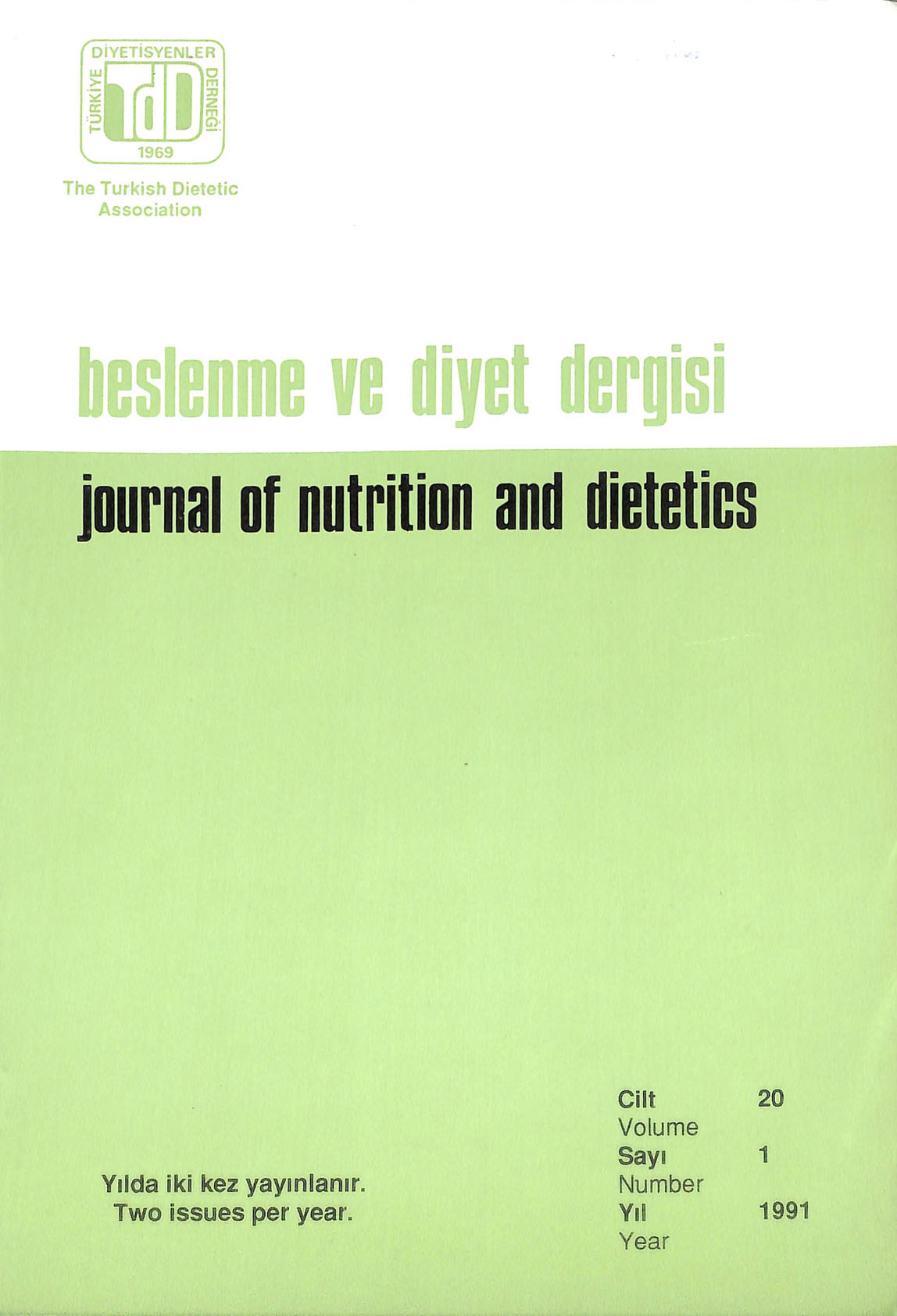The Nutritional Status Of Elderly People Lıvıng At Home
Keywords:
yaşlıAbstract
This study was carried out in four districts of Ankara to determine the nutritional status of 115 randomly selected people över 65 years of age. The demographic features and knovvledge of their health status was obtained by questionnaires. Data on their food consumption was obtained by three consecutive day individual food comsumption survey. YVhen their life style was investigated, it was found that 9.6% vvere living alone, 26.1% vvere living with their spouses and 64.3% vvere living vvith their children or relatives. Their most important health problems vvere obesity, hypertension, anaemia and hearing and visual defects. Daily energy consumption was found to be 1.700 ±41.17 calories. Daily average total protein consumption was 55.3 ± 1.47 g. and animal protein consumption was 16.7 ± 1.09 g. Compared vvith the 1980 recommended daily allovvance (RDA) their protein consumption vvas sufficient. However, 50.0% had levels of caldum, 28.0% iron, 36.0% vitamin A and 34.0% vitamin C levels vvhich vvere equal to or belovv 67% of the RDA. Among the B vitamins riboflavin and niacin consumption vvere insufficient. It vvas concluded that there is an important correlation betvveen the nutritional status of elderly people and their socio-economic status. insufficient nutrition vvas observed in the majority of those vvith low incomes and the most significant factor forcing elderly people tojive vvith their relatives was economic problems.

